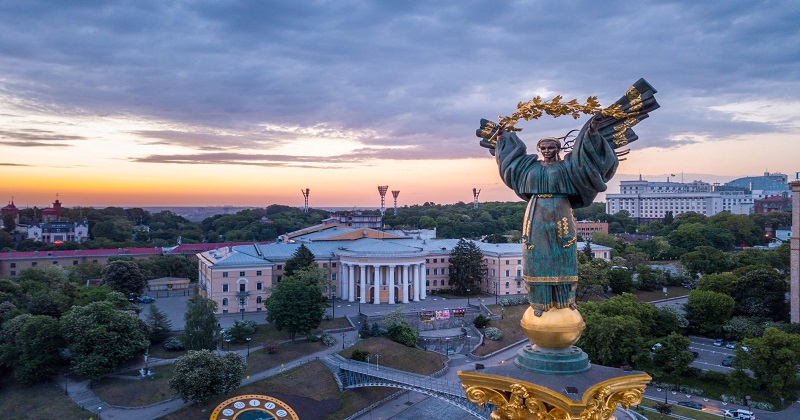
Ukraine is the homeland of the Ukrainian ethnic group of East Slavs. The country is Europe’s seventh-largest and the second-largest among the East Slavs. In Ukraine, the word ‘Ukrainians’ refers to the entire population. Ukraine is predominantly an Eastern Orthodox Christian nation. A Western-leaning Ukraine, which Russia views as a threat to its interests, has instead alternated between pursuing closer integration with Western Europe and being lured into its orbit since the dissolution of the Soviet Union in 1991. With huge concentrations of heavy industry in Ukraine’s east, the country is home to wide, fertile agricultural plains. Wheat, corn, and barley are among Ukraine’s top exports.
Basic facts:
- Capital: Kiev
- Population: 44.9 million
- Area : 603,700 sq km (233,090 sq miles)
- Major languages: Ukrainian (official), Russian
- Major religion: Christianity
- Life expectancy: 64 years (men), 75 years (women)
- Ethnic groups (2001): 77.8% Ukrainians, 17.3% Russians, 4.9% Others
- Currency: Ukrainian hryvnia
Five facts about the country that was long disputed by great empires.

Histories of disputes
Ukraine literally means ‘on the edge’. Both Russia and Ukraine today trace their roots back to the medieval state of Kievan Rus, which at its height stretched from the Black Sea to the Baltic Sea. In fact, Russian President Vladimir Putin has written a 5,000-word essay to prove that ‘Russians and Ukrainians are one people’.
However, Ukrainians speak their own language, and much of what is now Ukraine was part of the Polish-Lithuanian Commonwealth until the end of the 18th century, with other parts controlled by Cossacks and Crimean Tatars. The region was subsequently subsumed into the Russian empire although it was part of the Austro-Hungarian empire in its western regions.
Stalin’s famine
During the Soviet occupation of Ukraine, the country suffered from a devastating famine known as the Holodomor. Up to five million people died as a result of Stalin’s policies. Following the breakup of the Soviet Union in 1991, tensions between Kiev and Moscow flared up again as a majority of Ukrainians voted for independence. The Russian-backed president Viktor Yanukovych fled Ukraine in 2014 following a popular uprising. Moscow then annexed the Crimean peninsula and supported separatists in the east. Around 14,000 people have died in the conflict.

Troubled economy
Ukraine’s economy plummeted in 2014 as a result of the annexation of Crimea and the loss of the industrial Donbas region. A drop in GDP of more than six percent followed by a drop of nearly a tenth the following year, with inflation hitting more than 40 percent. Since then, its economy has recovered somewhat, but its 45 million people remain among Europe’s poorest. The average monthly wage is $615 (550 euros).
Transit fees are still a significant source of income for Belarus, but upcoming Moscow energy pipelines like Nord Stream bypass the country. Moscow cut supplies to Ukraine during disputes in 2006 and 2009, causing shortages in Europe as a result. Furthermore, anti-corruption campaigners regularly face physical attacks in the country due to endemic corruption.
Chernobyl
Chernobyl nuclear power station suffered the world’s most catastrophic nuclear accident on April 26, 1986. Hundreds died though the exact number remains unclear. Authorities in the Soviet Union tried to conceal the disaster at first. Eventually, 350,000 people were evacuated from within a radius of 30 kilometres (19 miles) around the plant, an exclusion zone that has remained uninhabited, except for an elderly couple who returned despite a ban. Humans will only be safe to live there again in 24,000 years. With the success of HBO’s ‘Chernobyl’ mini-series, the site has become a tourist attraction.
Borscht and Chicken Kiev
Borscht, a beetroot-based soup with cabbage, is not often associated with Russian cuisine in the West but has been regarded as part of Ukrainian cuisine since the 14th century. Ukraine and Russia compete over a number of other dishes, including Chicken Kiev.

Post Your Comments